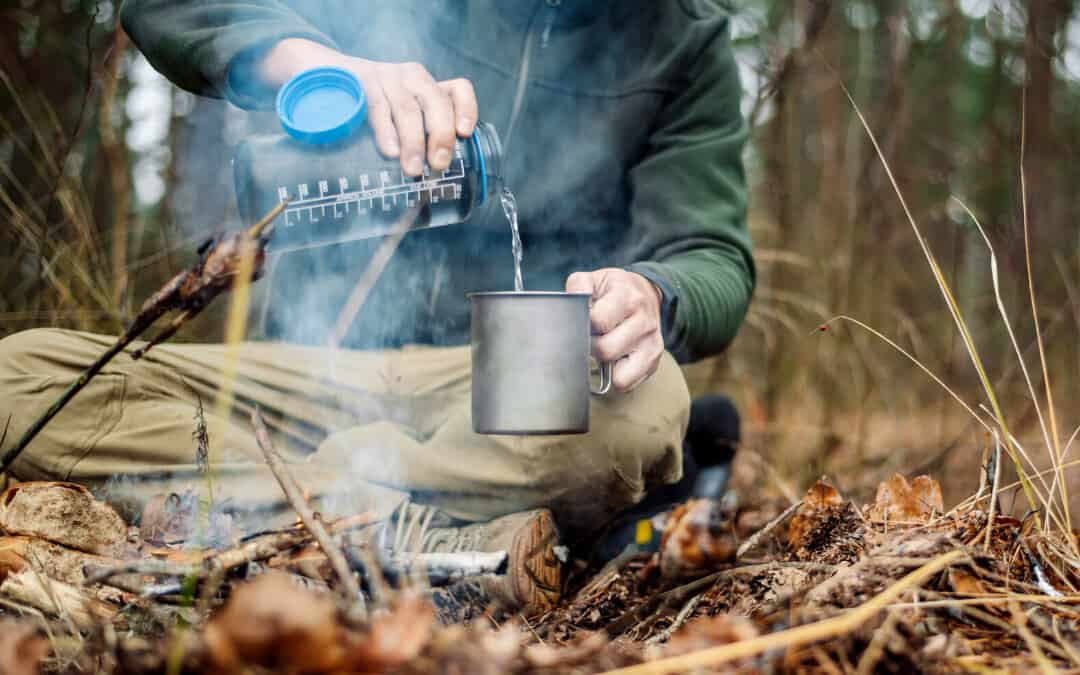We will discuss the importance of wearing waterproof and breathable clothing, using a waterproof backpack to store dry clothes and gear, and choosing a campsite that offers protection from wind and rain. Even if you're only planning a short hike or a day trip, it's essential to be prepared for any eventualities. The tips that we will provide can help you stay dry and safe, no matter what the weather throws your way.
As we prepare to embark on our next outdoor adventure, it's important to remember that we are entering a world that is unpredictable and can throw daunting obstacles our way. However, with the right equipment and knowledge, we can successfully overcome any challenges nature presents us. In this post, we will equip our readers with the essential knowledge that they need to navigate through nature safely and confidently. Stay tuned for more tips and recommendations to ensure a successful and enjoyable outdoor adventure.
Wear waterproof and breathable clothing.
As an outdoor enthusiast, the most important piece of gear you'll have is the clothing on your back. It can make or break your trip, especially when the weather takes a turn for the worst. The best way to combat inclement weather is to wear waterproof and breathable clothing. Here are some tips and tricks to help you get the most out of your gear:
1. Know what you need: There are different types of waterproof and breathable fabrics. Some are better suited for heavy rain and others for light showers. Do your research to figure out what will work best for the conditions you'll be facing.
2. Wear layers: Layering is a key component in staying comfortable while active in the outdoors. Start with a waterproof and breathable base layer, add a mid-layer for warmth, and a shell over the top to keep out the rain.
3. Check for breathability: It's important to make sure the fabric you're wearing is breathable. If your clothing is waterproof but not breathable, you'll end up feeling wet and clammy from sweat.
4. Don't forget about the fit: Make sure your clothing fits well and allows for a full range of motion. You don't want to be restricted while moving or have excess fabric that can get caught on rocks or branches.
5. Take care of your gear: Proper maintenance of your waterproof and breathable clothing will extend its lifespan. Follow the care instructions closely and avoid using fabric softeners or harsh detergents.
Wearing waterproof and breathable clothing is not only crucial for keeping you dry and comfortable on your outdoor adventures but can also prevent hypothermia and other health risks associated with exposure to rain and cold weather. As you prepare for your next trip, don't overlook the importance of proper clothing. Invest in quality gear, follow these tips, and enjoy the great outdoors in any weather condition.
Use a waterproof backpack to store dry clothes and gear.
When it comes to outdoor adventures, keeping your gear dry is key for staying comfortable and safe. One of the most useful tools for this is a waterproof backpack, which can keep your dry clothes and gear protected from rain, splashes, and even accidental submersion.
Here are some key tips and useful information for using a waterproof backpack to store dry clothes and gear:
1. Look for high-quality materials: Not all waterproof backpacks are created equal. Look for backpacks made from durable, waterproof materials like reinforced vinyl or nylon. Ensure that the backpack has waterproof zippers and taped seams to further protect your gear from moisture.
2. Use separate compartments: To keep your dry clothes and gear organized and easily accessible, use separate compartments within your waterproof backpack. This will also help prevent cross-contamination between wet and dry items.
3. Pack your items strategically: When packing your backpack, place your dry clothes and gear near the top so that they are easily accessible. Pack heavier, waterproof items like your rain jacket and tent near the bottom to help keep your center of gravity low.
4. Utilize dry bags for extra protection: Even if you have a waterproof backpack, it's a good idea to use extra protection for important items like electronics or important documents. Invest in dry bags and stuff sacks to further protect these items from moisture.
5. Practice proper backpack care: After each use, thoroughly clean and dry your waterproof backpack to prevent mold and mildew from developing. Follow any manufacturer guidelines to keep your backpack in top condition and ready for your next adventure.
Overall, a waterproof backpack can be a valuable addition to any outdoor enthusiast's gear collection. With proper use and care, it can protect your dry clothes and gear in even the wettest of conditions, allowing you to focus on the beauty of your surrounding environment.
Choose a campsite that offers protection from wind and rain.
When planning a camping trip, selecting the right campsite is crucial for a successful and safe experience. Choosing a campsite that offers protection from wind and rain is essential in ensuring the comfort and safety of campers. Here are some key factors and details to consider when selecting a campsite that offers protection from the elements:
1. Check the terrain: Look for campsites that are sheltered by natural features such as hills, trees or ridgelines. Avoid camping in exposed areas that are susceptible to strong gusts of wind or heavy rain.
2. Pitch your tent correctly: Even if your campsite offers shelter from the elements, it's important to pitch your tent correctly. Make sure that the tent is staked down securely and that the rainfly is properly installed. Doing so will keep you dry and prevent wind from causing any damage to your shelter.
3. Look for campsites with good drainage: In addition to offering protection from wind and rain, it's important to select a campsite that has good drainage for rainwater. This will ensure that your campsite doesn't become flooded during periods of heavy rainfall.
4. Plan ahead: Check the weather forecast for the area where you plan to camp. This will give you an idea of what to expect and help you choose a campsite that offers the best protection from the elements.
5. Be prepared: Bring the right gear and clothing to stay dry and comfortable should there be any rain or wind during your camping trip. This includes rain jackets, waterproof boots, and extra layers of clothing to stay warm, dry and comfortable.
Choosing a campsite that offers protection from wind and rain is essential to a successful camping trip. With these key factors and details in mind, you can select the perfect campsite for a safe and comfortable outdoor adventure.
Conclusion
Staying dry, warm, and safe in nature is crucial for any outdoor adventurer. Following these simple tips such as wearing waterproof and breathable clothing, using a waterproof backpack, and choosing a suitable campsite can help you not only stay comfortable but also stay safe in any weather conditions. By implementing these practices, you can ensure that you are better equipped to handle the elements while enjoying the beauty of nature. Remember, prevention is always better than cure, and these tips will go a long way in improving your overall outdoor experience. So, go ahead, explore the wilderness, and enjoy nature to its fullest, but always keep these tips in mind to ensure a safe and enjoyable journey.



0 Comments